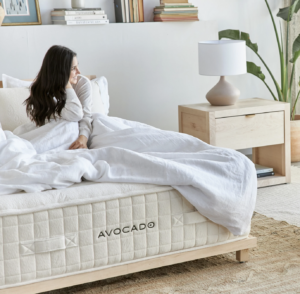Sugar. When we hear the word, certain images come to mind: dessert, candy, soda, hot chocolate. Images of sparking treats, maybe that favorite cookie recipe you always make during the holidays or your preferred occasional treat. Occasional being the operative word here. But give those labels on grocery store shelves a closer look, and you’ll see that sugar lurks around nearly every corner in the form of added sugar.
Even foods you might not expect contain surprising amounts of added sugar, like pasta sauce, sausage, bread, yogurt, salad dressing and coconut water (yes, even some brands of coconut water). If you’ve paid any attention to the internet in recent years, you may have even noticed a shift in thinking towards sugar — suddenly people are giving it up and swearing off it — where fat once stood as the “bad guy”, sugar now prominently sits.
But what makes added sugar so bad?
First, let’s get one thing straight: we’re talking added sugar, here. Not fruit, which also contains a wealth of fibre, vitamins and minerals that helps to balance the fruit sugars therein, or the naturally-occurring sugars found in dairy. No, we’re talking about sugars added after the fact, for which there are over 60 different names. High fructose corn syrup — we all know that one — but how about dextrose, dextrin, glucose solids, fructose, and cane syrup? All of these names are used for sugar, and many of them are added to foods to boost flavors and make things more sweet. The problem is, in boosting the sweetness and flavor of a food, that added sugar is also boosting the caloric load and training our taste buds to crave the ultra sweet.
From the FDA: “… Scientific data shows that it is difficult to meet nutrient needs while staying within calorie limits if you consume more than 10 percent of your total daily calories from added sugar…”
What else is that added sugar boosting? According to the Mayo Clinic, our rates of obesity, diabetes, tooth decay, and poor nutrition, to name just a few factors sugar contributes to. More recently, sugar is being studied for its effect on mental health and gut wellbeing. And that’s just the tip of the iceberg. Says one study from NCBI, sugar fits most of the criteria to qualify as an addictive substance. Consuming sugary treats is believed to trigger euphoric endorphins and dopamine, and “…craving, tolerance, withdrawal and sensitization have been documented in both human and animal studies.”
Sugar content, especially added sugar, is quickly becoming one of the most important points on a food nutrition label, and thankfully as of 2016, added sugars are now required to be listed. Previously, they were not. Which is a very good thing. Why? Read on.

Saying “No” to sugar
It’s scary stuff, for sure but our collective sugar addiction makes sense when you think about our own individual connections to sugar, sweets, and processed foods. It’s estimated by SugarScience that 74% of foods contain added sugar. Even already sweet foods, like dried fruit and fruit juice, often boast an unhealthy dose of added sweetner. Considering the American Heart Association recommends consuming no more than 6 teaspoons of added sugar per day for women, and 9 teaspoons per day for men (for reference, the average soda contains 11 teaspoons, well above the recommended limit for anyone), this knowledge gives power to the consumer.
Those in the Western World (looking at us, America) are notorious for their love of processed foods, and most processed foods contain added sugar. It’s easy to see how we got here, and while not impossible in any way, untangling ourselves from added sugar’s sweet, sweet web is a bit more complicated and takes some strategy.
Breaking up with added sugar
First, it’s important to learn where added sugar likes to hang out. Perhaps you’ve heard the tip to shop the perimeter of the grocery store? The perimeter typically houses the healthiest and freshest options, like produce, fruits, bulk beans and grains, meat and fish, and eggs and dairy. The innermost aisles of the grocery store typically contain more processed, not-so-good for you “food” that often contains added sugar. While this tip is mostly truthful — and certainly helpful — what it doesn’t take into account are the super stealthy hiding spots of added sugars. Like sweetened yogurts, sweetened “smoothies” and juices in the produce section, and granola bars near the cash register. Added sugar is sneaky, but with a few tips, you can outsmart your sweet tooth.
#1 — Ditch the label
The easiest way to ensure you’re not consuming unnecessary sugar? Buy food that doesn’t have a label or packaging, like fruit and veggies, and make your food from scratch. More work? Yes. Way more delicious? Double yes. If you haven’t cooked before or are intimidated by branching out, try finding a few healthy cookbooks and make it a project to cook your way through them! By swearing off overly processed foods, you may even find that you’re saving some money on your grocery bill, too!
#2 — Get the facts
Even the most virtuous among us is bound to need something that arrives in a package, and with that package comes the nutrition facts label. In choosing between products, opt for the one that features as few ingredients as possible, all with understandable names. Try making your own almond milk, or if you eat dairy, adding fresh fruit and nuts or seeds to plain yogurt. If you can’t understand the ingredients, put it back on the shelf. After you read the ingredients, check out the sugars and added sugars information. Choose products that contain no added sugars, and as little naturally-occurring sugar as possible.

#3 — Sip smart
For many, giving up soda is akin to quitting smoking, which makes sense when you consider sugar’s addictive nature. But cutting soda from your life doesn’t have to mean misery and transitioning to unsweetened drinks will likely lead to you feeling better and more hydrated! To help yourself transition away from sweetened beverages, try sipping seltzer or ice water with a squeeze of citrus, or make a big pitcher of iced herbal tea to keep on hand for when you’re craving something flavored.
#4 — Go cold turkey
If you’re serious about breaking up with sugar, an elimination diet like the Whole 30 or the 21 Day Fix could help you by setting clear parameters around what’s allowed and what’s not for a set amount of time – sugar being a main category. These programs can be a crash course in reading nutrition labels, cooking fresh, and shopping smart – just be sure to speak with your doctor beforehand to ensure the program you have in mind is right for you.
By cutting back or completely eliminating added sugar, you’re helping your body recalibrate and respond to the natural sweetness in the fresh foods all around us. After awhile, you’ll likely notice that fruit tastes sweeter, veggies more vibrant, and those favorite treats of yours perhaps a little too saccharine (that’s ok, a quick Google search will turn up plenty of ways to healthfully cut back on sugar in your favorite recipes!).
Have you kicked your sugar habit? Have tips to share? Share with our community by tagging us with @AvocadoMattress or #AvocadoGreenMagazine on social!

Shop Pillows
The Essential Organic Pillow Collection
Gentle, breathable, non-toxic support.






